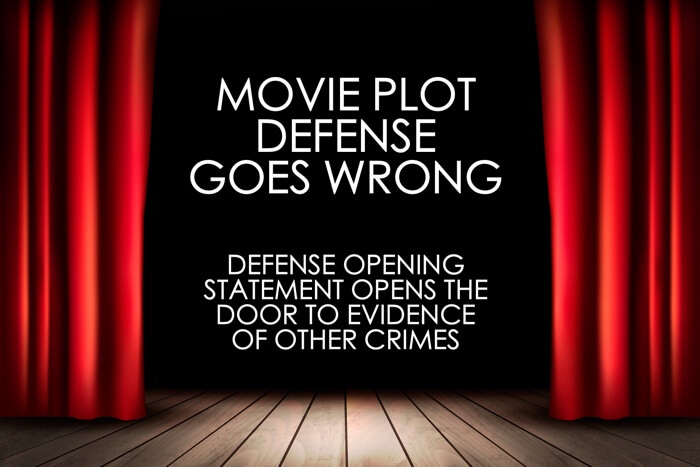
In United States v. Perkins, the Ninth Circuit Court of Appeals held police officers must submit copies of explicit images that the officer believes gives probable cause for a search warrant for child pornography to the judge who is considering the search warrant application so the judge can independently determine whether the nude photographs are sexually suggestive.
BACKGROUND FACTS
Canadian Investigation
On December 29, 2012, Charles Perkins, a then-52-year-old citizen of the United States, was traveling through Toronto International Airport on his way home to Washington State after taking a trip to Chile with his wife and mother-in-law. Canadian Border Services Agency(“CBSA”) officers stopped Perkins after learning that he was a registered sex offender. Perkins had a 1987 first-degree incest conviction and a 1990 first-degree child molestation conviction.
A CBSA officer searched the laptop that Perkins was carrying and, in a folder labeled “cperk,” found two images that he believed to be child pornography. A Peel Regional Police (“PRP”) officer also reviewed the images and, based on his review, arrested Perkins for possession of child pornography. CBSA authorities seized the laptop, along with a digital camera and a memory card.
The next day, Canadian police obtained a search warrant and searched Perkins’ luggage. Constable Ullock searched the laptop and found the two images that the CBSA officer had originally discovered. After reviewing the images, Constable Ullock concluded that they did not constitute child pornography under Canadian law. In his report of the investigation, he describes the two images as follows:
IMAGE #1 Filename 997.jpg Description: This is a Caucasian female that I would estimate to be between the ages of 13 to 15 years of age. The image shows her only from the mid torso up, including her face. The girl appears to be nude and her breasts are clearly visible . . . . In spite of the fact that this girl is under the age of 18, her breasts are not the dominant feature of the image, and there is no obvious sexual purpose to the image. Therefore this image does not meet the Canadian Criminal Code definition of child pornography.
IMAGE #2 Filename 989.jpg Description: This is an image of a Caucasian female that I would estimate to be between the ages of 13 to 14 years of age. This girl is sitting and appears to be taking a picture of herself by holding out a camera with her right arm slightly above her head looking down on her. . . . This girl is completely nude and towards the bottom of the picture a small portion of her vagina can be seen. . . . However in this photo the view of the girls’ [sic] vagina makes it a minor aspect of the photo, and her hair drapes over much of her breasts, which decrease[s] their prominence. Again there is no clear and obvious sexual purpose to the picture, which means it does not meet the Criminal Code of Canada definition of child pornography.
Based on Constable Ullock’s recommendation, the charge against Perkins was dropped on January 10, 2013.
American Investigation
The case was forwarded to Special Agent Tim Ensley of the United States Department of Homeland Security. Agent Ensley received the two images for first-hand review on January 14, 2013. Ensley applied for a search warrant. In his affidavit, Ensley explained that Canadian officers stopped Perkins because of his prior convictions and arrested him after reviewing the images. Also, Ensley’s description of the second image was far different than the Canadian Constable’s:
IMAGE #2 Filename 989.jpg Description: This color image depicts a white female (hereinafter referred to as “child victim”) sitting on what appears to be a bed with one arm stretched out taking a picture of herself. The child victim is completely nude and can be seen in the image from her upper thigh area to the top of her forehead. The child victim’s breasts and genital area are clearly visible. . . . The child victim is young in appearance and appears to be between twelve and fourteen years of age.
Agent Ensley concluded that the second image (hereinafter referred to as the “989.jpg image”) met the federal definition of child pornography. However, his warrant application did not include copies of either image. Also, Ensley failed to state that the charge in Canada had been dropped pursuant to Constable Ullock’s determination that the images were not pornographic. On January 16, 2013, an American magistrate issued the warrant. Officers arrived at his home and confiscated his computers
The Search and Franks Hearing
The search pursuant to the warrant revealed several images of child pornography on Perkins’ computers, and he was charged with one count of receipt of child pornography and one count of possession of child pornography. Perkins moved to suppress the evidence, arguing that the warrant lacked probable cause. Alternatively, Perkins argued that Agent Ensley deliberately or recklessly omitted material facts from the affidavit, entitling him to a Franks Hearing under Franks v. Delaware, 438 U.S. 154 (1978).
For those who don’t know, a Franks Hearing is a hearing to determine whether a police officer’s affidavit used to obtain a search warrant that yields incriminating evidence was based on false statements by the police officer. The district court denied the motion for a Franks Hearing in its entirety.
On June 6, 2013, Perkins conditionally pleaded guilty to one count of receipt of child pornography. The district court sentenced Perkins to an 180-month term of imprisonment. Perkins appealed.
THE APPEAL
The Court of Appeals examined whether the search warrant contained purposefully or recklessly false statements or omissions. To prevail on a Franks challenge, the defendant must establish two things by a preponderance of the evidence: first, that the officer intentionally or recklessly made false or misleading statements or omissions in support of the warrant, and second, that the false or misleading statement or omission was material, i.e., “necessary to finding probable cause. If both requirements are met, the search warrant must be voided and the fruits of the search excluded.
Here, the Court of Appeals held the lower court mistakenly denied Perkins’ motion to suppress. It reasoned that an officer presenting a search warrant application has a duty to provide, in good faith, all relevant information to the magistrate. Here, Agent Ensley omitted from the search warrant application: (1) the fact that Canadian authorities dropped the child pornography possession charge against Perkins because the images were not pornographic; (2) important portions of Constable Ullock’s description of the 989.jpg image; and (3) copies of the images.
“By providing an incomplete and misleading recitation of the facts and withholding the images, Agent Ensley effectively usurped the magistrate’s duty to conduct an independent evaluation of probable cause,” said the Ninth Circuit. Therefore, Agent Ensley omitted relevant information from the affidavit that resulted in the misleading impression that image 989.jpg was unequivocally child pornography.
Furthermore, the Ninth Circuit held the warrant application was unsupported by probable cause; and that his 20-year prior convictions failed to make it more likely that child pornography would be found on Perkins’ home computers.
Finally, the Ninth Circuit reasoned that the two images found in Perkins’ laptop computer did not establishe a fair probability that there was child pornography on Perkins’ home computer in Washington:
“Other than the fact that the subject is nude, the image lacks any traits that would make it sexually suggestive . . . The subject is not posed in a sexual position with, for example, “her open legs in the foreground . . . She is not pictured with any sexual items. She is sitting in an “ordinary way for her age.” Indeed, if the subject were clothed, this would be a completely unremarkable photo. Viewing the image as a whole, we conclude, under the Dost six-factor test, that it does not depict the ‘lascivious exhibition of the genitals or pubic area.'”
With that, the Ninth Circuit reversed the district court’s denial of the motion to suppress evidence obtained pursuant to the search warrant, and vacated Perkins’ conviction. The case is remanded for further proceedings consistent with this opinion.
Good decision.
Please contact my office if you, a friend or family member are charged with a crime. Hiring an effective and competent defense attorney is the first and best step toward justice.
















